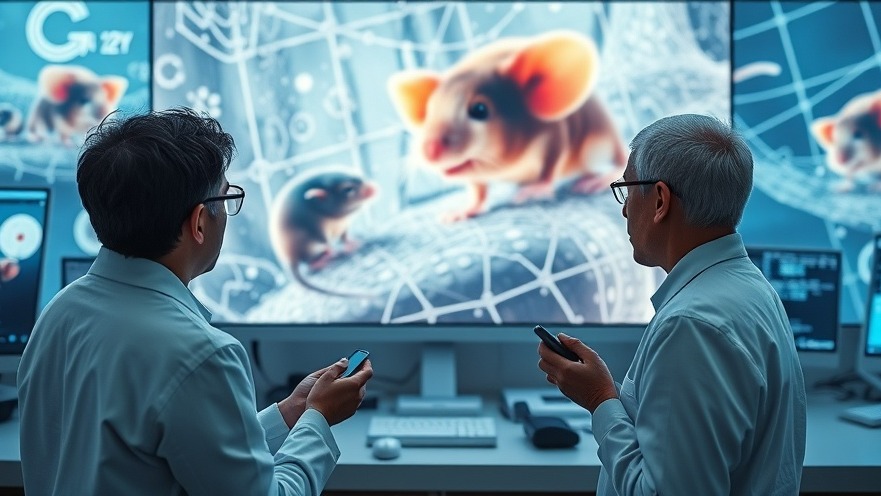
The Future of Mouse Modeling in Neurological Research
Mouse models have long been foundational in the development of treatments for neurological disorders. This is particularly important for conditions such as Parkinson's disease, where understanding and alleviating motor symptoms like tremors are critical. However, accurately tracking the nuanced movements of mice in an experimental setting has been a challenging endeavor—until now.
How Hollywood’s Innovations Are Shaping Science
Researchers at the Okinawa Institute of Science and Technology (OIST) have turned to the world of entertainment—specifically, Hollywood’s motion capture technology—to create a groundbreaking approach to studying mice. By adopting a marker-based motion capture system that utilizes finely-tuned reflective markers attached to the mice’s bodies, scientists can now gather precise 3D movement data. This method eschews the need for complex AI or machine learning data processing, presenting a straightforward yet highly effective tool for researchers.
Challenges Overcome with Innovative Solutions
One of the primary hurdles with traditional motion capture systems is their ineffectiveness with small animals like mice. Historically, efforts to monitor mouse movements often resulted in poor data quality. According to Dr. Bogna Ignatowska-Jankowska, first author of the study published in eNeuro, mice's diminutive size and curious nature made accurate motion capture a daunting task. The new approach, however, mitigates these issues by employing open, wall-free environments where multiple cameras can record the mice’s movements unobstructed, ensuring high fidelity data capture.
Creating Animal-Friendly Experimental Landscapes
The researchers designed unique environments for their experiments, including a flat surface, a treadmill, and a climbing wheel. Using stainless steel, reflective-coated balls as markers, they were able to document the mice's movements while allowing them to behave naturally. This not only ensured the humane treatment of the animals but also produced more reliable behavioral data that reflected authentic natural movement. Professor Yoe Uusisaari, head of the Neuronal Rhythms in Movement Unit, highlighted that their low-stress approach—letting the mice roam freely without rewards or punishments—contributed significantly to the success of the study.
Potential Implications for Neurological Treatments
The implications of this research extend far beyond academic interest. The accurate modeling of movements paves the way for better drug testing protocols for neurological diseases. By understanding how different treatments impact physical movement in real-time, researchers can fine-tune their approaches to drug development, potentially leading to more effective therapies for patients suffering from movement-related disorders.
Looking Ahead: The Convergence of Technology and Medicine
As we advance into an era where technology becomes increasingly integrated into healthcare practices, tools like this motion capture system represent a promising future for medical research. By leveraging the same principles that drive entertainment technologies, researchers can unlock new pathways for understanding and treating complex diseases. This intersection offers a valuable blueprint for future innovations that will benefit not only the scientific community but also healthcare professionals dealing directly with patients.
Conclusion: Embracing New Technologies in Health Practice
For concierge health practitioners, staying informed about technological advancements such as this motion capture system is essential. By understanding and applying these innovations, practitioners can enhance their patient care strategies. It’s important to continually assess how emerging techniques can transform treatment approaches and improve outcomes for patients.
Ready to explore how these advancements can impact your practice? Embrace the future of patient care by engaging with the latest research and technologies.
 Add Row
Add Row  Add
Add 






Write A Comment